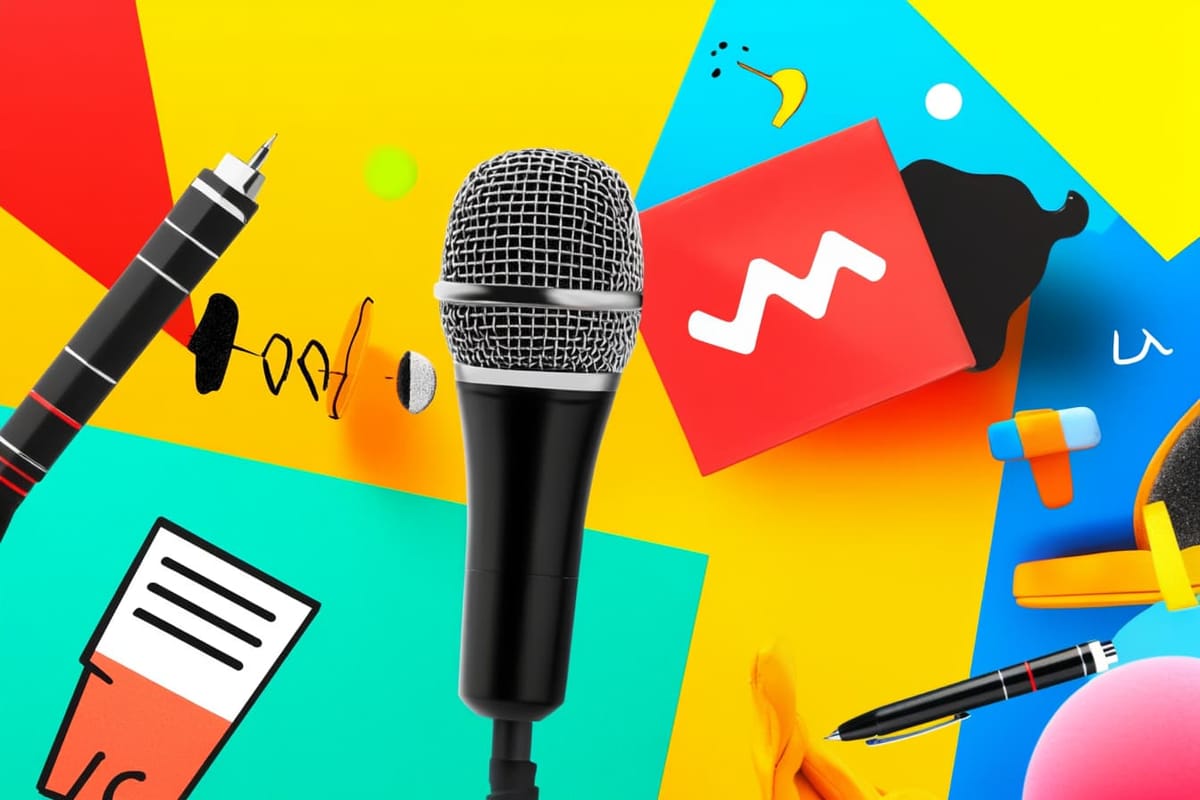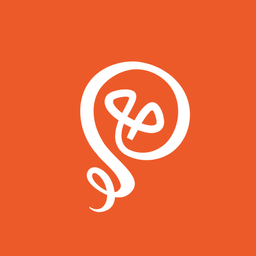7 Things I Got Right About Marketing Myself as a Solo Business
Without a formal background in marketing.

Until 2021, I'd never worked in marketing. I was a tech executive who joined The Great Resignation and quit my job, pivoting to content marketing and journalism. About 18 months later, I became a full-time freelancer. I'd done some marketing when I worked in tech, but it was haphazard at best and only because the company didn't want to invest in marketing efforts.
By any measure, I'm new to the party, especially compared to people who have been in marketing for decades. I don't claim to have a pulse on the latest trends (especially on platforms like TikTok). But I've grown my little one-person business to an income that rivals my executive salary.
It's all because I've marketed myself — and done it in a way that doesn't feel cringe. It feels good, actually, because I create content I care about. A lot of it was trusting my gut and learning from smart people who were further along in their solo journeys.
Here are a few things I've done to get where I am today: a steady stream of client work that's almost entirely inbound.
1) Optimizing my name for SEO
For the first 15 years of my career, I was known as Anna Yang. I graduated from college and started a full-time job about six weeks later — and between that time, I got married. So I've always been "Anna Yang" professionally.
When I changed careers in 2021, I started using "Anna Burgess Yang." Burgess is my middle name and also my maiden name. I had two main reasons for doing this. First, I was changing careers and wanted to create a "new identity" that somehow separated my past from my future. Second, I thought Anna Burgess Yang would be better for search. At the time, I only knew the basics of search engine optimization (SEO), but I knew a more unique name would make me easier to find. I also updated my LinkedIn profile.
Whether you're operating under your name or a business name, you have to think about search. If you're using your name, consider adding your middle name or middle initial. Make sure your company name is also easy to find.
Years after I decided to use Anna Burgess Yang, I listened to the podcast episode How to Invent a GREAT Brand Name. The guest, Alexandra Watkins, has some great tips for establishing a brand name, making sure it's memorable, but also accessible. You can also run a potential name through the Free Name Evaluation Test on the website Eat My Words.
2) Building a presence on LinkedIn
When I first started posting regularly on LinkedIn, I had no specific goal. I'd just quit my tech job and wanted to share updates with my network. It was almost like a more frequent version of the "life updates" you might get in an annual Christmas card. I'd formed some really good relationships with people in my prior career and wanted to stay connected.
Eventually, my weekly posts became twice a week, because people started commenting back and I genuinely enjoyed engaging with them. I noticed that other people were building personal brands — even people who had a full-time employer, like I did at the time. I had an inkling that I might become self-employed someday, and I knew a social media presence could contribute to success. At worst, an online presence would enhance any career moves I made from one company to another.
I worked my way up to publishing daily on LinkedIn and now post twice per day. I have systems in place to make this easier. Most of my posts start as comments on other people's posts. I harvest those comments (using an app called Readwise) and then later expand on them, turning them into my own posts. That way, I'm not staring at a blank screen when I sit down to batch create my posts.

3) Networking
As a solo business, your network is everything. People know you, refer you, and bring your name up in conversations. You want people to think of you when you're not in the room.
Even before I went out on my own, I knew that my network would be critical for my career. I joined several Slack communities and engaged with people there, which paid off with some initial freelance work and LinkedIn connections. I use an app to keep track of interactions with people (also known as a personal CRM).
If you're time-constrained, be strategic about your networking. Focus on networking with people who can help grow your freelance business or potential clients. One boundary I've had to set is limiting the number of coffee chats I have with people. I get requests constantly, and at first I would schedule them because it seemed like a good way to network. However, I quickly realized that the coffee chats almost never benefitted me and cost me time. I want to stay connected to people who take the time to reach out, so I'll usually reply:
"Thanks for reaching out! As a self-employed person, I have to be really protective of my time, so I only meet with potential clients. Happy to answer a question via DM though!"
I'll make an exception if the person has a large network themselves, and it would be good for me to stay on their radar.
4) Appearing as a Guest on Podcasts
As I learned more about SEO, I knew that I could build my website's domain authority with quality backlinks. So I started appearing as a guest on podcasts. I'm comfortable talking, I don't need to prep much, and it usually results in a backlink from the host's main podcast page. It also provides additional content for me to share on my social profiles.
Podcasts are inherently self-promotional but don't have to feel sales-y. You can talk about yourself and your work in a way that builds awareness for yourself and your company. When the episode is shared, you've reached a new audience (the host's audience) that you may not have had access to otherwise.

5) Creating a lead magnet
Plenty of solo businesses only do client work, and that's fine. Personally, I like diversified income because it de-risks my client relationships. So I also create resources for fellow freelance writers and solopreneurs. I talk about these resources on social media, and any smart marketer will tell you that you should find a way to capture people's email addresses.
Social platforms will come and go (just look at Twitter) and your audience could disappear overnight. You need a way to get in touch with people and land in their inboxes. The easiest way to do this is with a lead magnet. The lead magnets I have created have driven more than 1,000 people to my email list.
Initially, I made some mistakes, like putting my first resource out into the world without much thought about how to drive traffic to it. However, writing on Medium has become a huge distribution channel for me.
- I publish an article on my blog and cross-post to Medium with a canonical URL
- I include the lead magnet as a call-to-action at the end of my Medium posts
- The lead magnet is hosted on Gumroad, which captures the person's email address
- Gumroad is integrated with Kit (formerly ConverKit) [affiliate link], which allows me to segment the audience
I originally worked with fellow freelancer to build my lead magnet, which was incredibly helpful. Together, we worked through the following steps:
- Identifying a topic that my audience (fellow solopreneurs) would find compelling
- Designing the lead magnet (an eBook) in Canva
- Building a landing page
- Crafting an email welcome sequence for people who download the resource
I've since modified my lead magnet — the design, the landing page, and the emails — but these steps gave me a solid foundation in the beginning.
6) Investing in design
About 1.5 years after I became a full-time freelancer, I invested in design. I'd reached the limits of what I could create in Canva.
Working with a professional designer is A Very Big Project, but I'm 1000% glad I did it. Design gives me more credibility and consistency. I can always tell when someone is winging it with generic design templates and I didn't want that for myself. Investing in design elevated my brand.
If you're thinking about working with a designer, here are some things to keep in mind:
- You have to be super clear about who you are and the clients you serve since design is about attracting the right audience
- Make a list of your current assets, such as your website, social profiles, social graphics, presentation files, etc. so your designer can properly scope the project
Additionally, working with a designer is time-consuming. More than likely, you'll need to update your assets yourself with your new brand files. I had to roll mine out slowly over a few weeks simply because I didn't have the bandwidth to update everything at once.
7) Publishing Consistent, Good Content
Every week, I publish long-form content (my blog and Substack) and social posts. I follow SEO best practices (though I still mostly write about topics I care about rather than chasing keywords) and my content is starting to rank organically. Long-form content pays off as it can be repurposed in other formats, such as LinkedIn carousels.
While I don't think a high volume is necessary — I'm a writer, so this comes naturally for me — showing up consistently is necessary for marketing yourself and your business. The worst time to market yourself is when you need clients, because marketing efforts take a long time to pay off. Better to build the muscle now, so it becomes part of your weekly routine.
As a solopreneur, you have to be a little bit of everything: sales, accounting, project management, and marketing. Marketing yourself doesn't have to feel like a chore if you set aside a small amount of time to market yourself each week.
And as a note: I'm rarely self-promotional with my content. I show up on platforms talking about my expertise in a few different areas. This has been effective because people find me and either follow me (audience) or reach out (clients). They know who I am and get a sense of the work I do based on talking consistently about a few themes.
I never expected miracles.
I want to build a sustainable freelance business. Through my marketing efforts, I've seen consistent growth in my revenue and audience. It takes time, but I know I'll outlast many who give up too soon.
You also never know what will happen. Back in 2022, one of my LinkedIn posts went viral and hit almost 4 million views, leading to a huge increase in my audience and a lot of inbound work. So even though I didn't expect this to happen, it did. Every time you publish something online, you have a chance that it could go viral. It's like playing the lottery, over and over again.
Virality aside, you should create systems (such as a content calendar and templates) you can use when marketing yourself. Repeatable processes will make your efforts easier. Start by setting aside a small amount of time per week (an hour) to focus on marketing using whatever tactics you choose. Consistency will pay off.
Check out my free eBook: 17 Smart Tools Solopreneurs Need to Start, Grow, and Scale.






